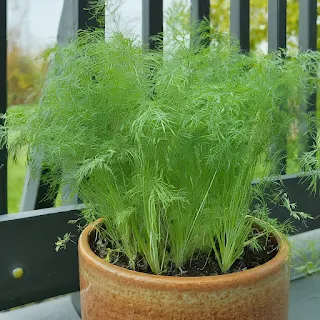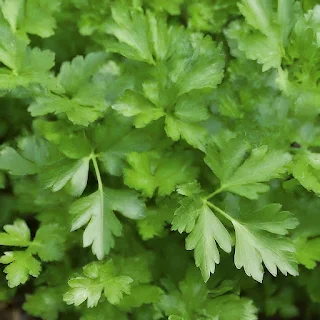Complete List of Perennial, Annual and Biennial Herbs
 |
| Do you have biennial herbs in your garden? |
Words like perennial, annual and biennial represent ways to categorize herbs and other plants based on their long term survival strategies. Plants are quite literally rooted in place, so they can't just get up and move when something unexpected and potentially devastating happens in their environment. The risk of flood, drought, high heat and seasonal pest and disease problems can make being a plant a tough proposition, but nature's clever life cycle choices help plants handle these risks.
Which approach, perennial, annual or biennial is most likely to ensure a plant species' long-term survival? Well, that depends.
 |
| Lavender is a perennial herb |
What are Perennial Herbs (polycarpic lifecycle)?
Perennials do well in environments that are predictable. Their root systems allow them to survive colder periods, often by going dormant so they don't use up valuable resources. And even though they may lose their above ground stems and leaves, their roots possess stored energy that allows them recover quickly in spring. By living for multiple years, perennials aren't required to start from scratch year after year. They can use some of those energy reserves to get a jump start on flourishing, flowering and setting seed. They have mechanisms in place to help them complete with other plant varieties, and even from region specific pests. These things give perennials a huge advantage, and helps them outperform short-lived plants -- the annuals.
Sounds perfect doesn't it? But what happens when something goes wrong? Say, winter comes too soon, before the plant has had an opportunity to store essential nutrients, or there is a period of flooding that causes extensive root damage? The results can be catastrophic. A perennial survival strategy is a good plan for the status quo. When there is a lot of uncertainty in the environment, though, nature has as a backup plan - the annuals.
 |
| Dill is an annual herb |
What are Annual Herbs (monocarpic lifecycle)?
Annuals are plants that make creating the next generation quickly their overwhelming priority. They're on the fast track. Annuals sprout, grow, set seed and die in a single season. The following spring their seeds are available to germinate. After a hard winter coma the odds are better that one or more seeds from an annual will sprout next spring, than that one stressed and struggling perennial will manage to make a comeback. Nature is playing the odds.
The plan is elegant and maybe a bit cruel, but certainly efficient. That's not all. Annuals expend an enormous amount of energy producing seeds, much more than your average perennial does. Why? You guessed it. In an uncertain world, more seeds mean a better chance at survival, so 100 seeds become 500 or 1,000 or more -- potentially much more.
There is another minor refinement to these two survival strategies you should know about, too -- the biennials:
 |
| Parsley is a biennial herb |
What are Biennial Herbs?
List of Perennial, Annual and Biennial Herbs
List of Perennial Herbs - with Common Name, Botanical Name, Hardiness Zone Range
- Agrimony, (Agrimonia eupatoria), 3 - 8
- Angelica, Angelica archangelica, 3 - 8,
- Anise Hyssop, Agastache foeniculum, 4 - 8
- Arnica, Arnica montana, 3 - 8
- Bay Laurel, Laurus nobilis, 8 -10
- Bergamot, Monarda didyma, 4 - 8
- Betony, Stachys officinalis, 4 - 8
- Borage, Borago officinalis, 4 - 8
- Calendula,
- Catnip, Nepeta cataria, 3 - 8
- Chamomile (Roman), Chamaemelum nobile
- Chives, Allium schoenoprasum, 3 - 8
- Comfrey, Symphytum officinale, 4 - 8
- Dandelion, Taraxacum officinale, 3 - 8
- Echinacea, Echinacea purpurea, 3 - 8
- Fennel, Foeniculum vulgare, 4 - 8
- Feverfew, Tanacetum parthenium, 4 - 8
- Figwort (Chinese), Scrophularia buergeriana, 4 - 9
- Ginseng (American), Panax quinquefolius, 3 - 8
- Hops, Humulus lupulus, 3 - 8
- Hyssop, Hyssopus officinalis, 4 - 8
- Ironweed, Vernonia noveboracensis, 3 - 8
- Laserwort, Saposhnikovia divaricata, 4 - 8
- Lavender, Lavandula angustifolia, 5 - 9
- Lemon Balm, Melissa officinalis, 4 - 8
- Lovage, Levisticum officinale, 4 - 8,
- Marjoram, Origanum majorana, 7 - 10
- Meadowsweet, Filipendula ulmaria, 3 - 8
- Mint, (Mentha spp.), 4 - 8
- Motherwort, Leonurus cardiaca, 4 - 8
- Mugwort, Artemisia vulgaris, 3-8
- Oregano (Greek), Origanum syriacum, 7 - 10
- Oregano (Italian), Origanum vulgare, 5 - 9
- Pennyroyal, Mentha pulegium, 7 - 10
- Rosmarinus officinalis, 5 - 9
- Rue, Ruta graveolens, 5 - 9
- Saffron Crocus, Crocus sativus, 7 - 9
- Sage, Salvia officinalis, 5 - 8
- Santolina, Santolina chamaecyparissus, 7 - 9
- Scullcap (Scutellaria lateriflora), Scutellaria lateriflora, 3 - 8
- Soapwort, Saponaria officinalis, 3 - 8
- Sorrel (garden), Rumex acetosa, 4 - 8
- Tansy, Tanacetum vulgare, 3 - 8
- Tarragon, Artemisia dracunculus, 3 - 8
- Thyme (common), Thymus vulgaris, 5 - 9
- Valerian, Valeriana officinalis, 3 - 8
- Wooly Lamb's Ear, Stachys byzantina, 4 - 8
- Wormwood, Artemisia absinthium, 3 - 8
- Yarrow, Achillea millefolium, 3 - 8
- Zaatar (Origanum syriacum), 7 - 1
List of Annual Herbs - with Common Name, Botanical Name
- Arugula (Eruca sativa)
- Basil (Ocimum basilicum)
- Sweet basil (Ocimum basilicum var. dulce) - a variety of basil
- Borage (Borago officinalis)
- Chamomile (Matricaria recutita)
- Chervil (Anthriscus cerefolium)
- Cilantro (Coriandrum sativum)
- Culinary amaranth (Amaranthus spp.) (depending on the variety, young leaves are edible)
- Dill (Anethum graveolens)
- Epazote (Dysphania ambrosioides)
- Fennel (Foeniculum vulgare) (often grown as an annual)
- Sweet fennel (Foeniculum vulgare var. dulce) - a variety of fennel grown for the bulb
- Garden cress (Lepidium sativum)
- Globe amaranth (Gomphrena globosa) (not technically an herb, but dried flower heads used decoratively)
- Marigold (Tagetes spp.) (not technically an herb, but deters pests and attracts pollinators
- Nasturtium (Tropaeolum majus) (not technically an herb, but edible flowers and leaves)
- Purslane (Portulaca oleracea)
- Salad burnet (Sanguisorba minor)
- Stevia (Stevia rebaudiana) (often grown as an annual in colder climates)
- Summer savory (Satureja hortensis)
List of Biennial Herbs - with Common Name, Botanical Name
- Borage (Borago officinalis)
- Celery Leaf (Apium graveolens var. rapaceum)
- Clary Sage (Salvia sclarea):
- Comfrey (Symphytum officinale):
- Evening primrose (Oenothera biennis)
- Fennel (Foeniculum vulgare)
- Foxglove (Digitalis purpurea)
- Henbane (Hyoscyamus niger)
- Hollyhock (Alcea rosea)
- Musk Mallow (Malva moschata)
- Parsley (Petroselinum crispum)
- Viper's Bugloss (Echium vulgare)

Comments
Post a Comment
Share some ideas.